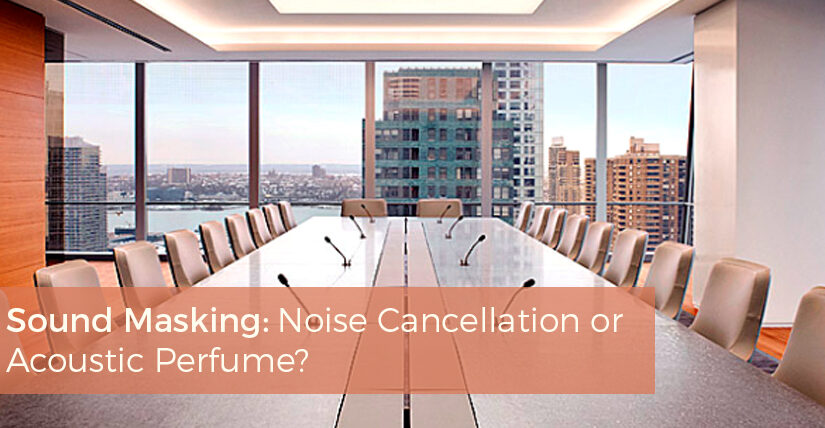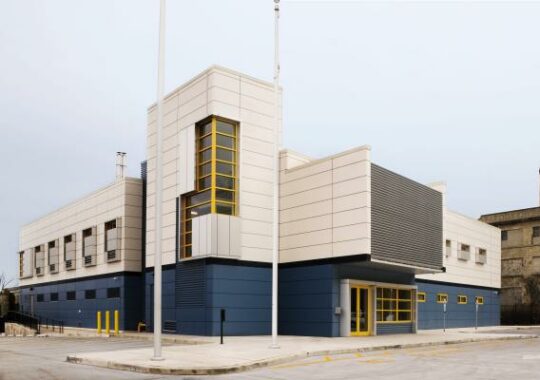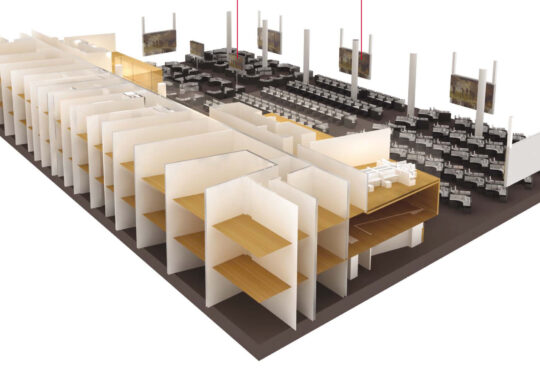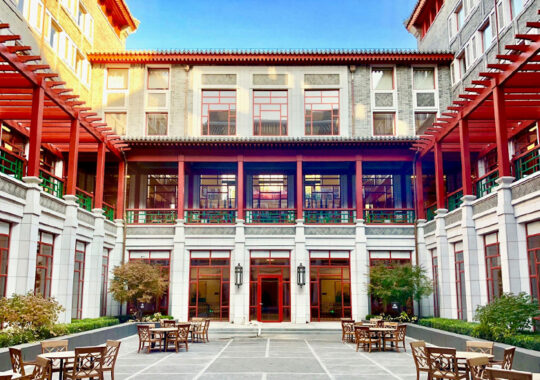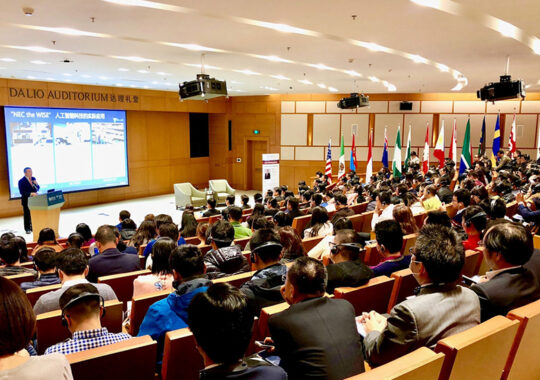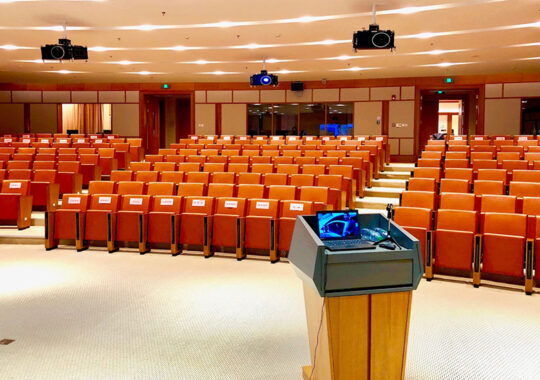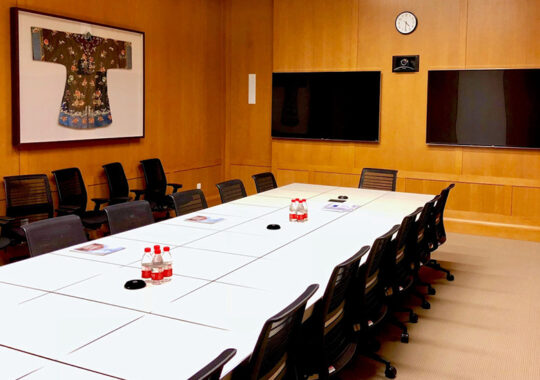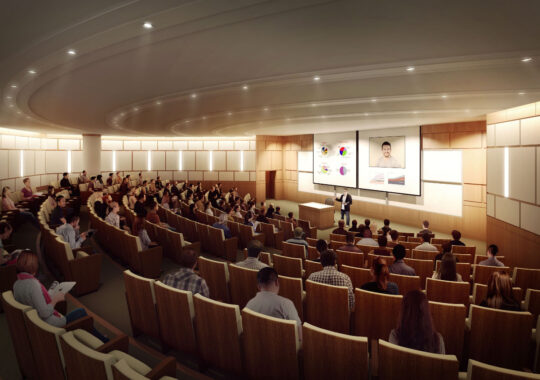Sound masking is an effective tool for enhancing speech privacy and reducing distraction, but how does it do it?
Let’s first discuss noise cancellation. Noise cancellation is technically when a sound pressure wave, which has peaks and valleys in pressure, is cancelled out by an out-of-phase (or opposite) sound pressure wave. As this suggests it’s a very precise and controlled operation to cancel a sound pressure wave. It requires a very controlled environment and specific sampling and reproduction of the sound source (reproduction of distinct out-of-phase noise canceling sound waves). Noise cancellation works within the controlled environment of headphones, within car/truck cabs, and for large exhaust stacks; very defined environments. Office areas are not controlled and defined environments.
Sound masking, as the name suggests, “masks” or covers-up other sounds. Thus, it is sometimes referred to as “Acoustic Perfume”. Sounds at lower or equal levels are fully or partially covered-up or masked, and thus, those sounds are inaudible or only partially audible. Since the “perfume” covers-up some sound, the remaining sounds and voices become less distracting and in some cases are covered-up enough to provide a good degree of speech privacy. The presence of a moderate background sound level, provided by sound masking, also reduces the tendency to listen for other sounds.
An industry standard masking sound is a specifically shaped or tuned random “white” noise Masking sound is commonly thought to be air-flow noise thru a supply air diffuser. In one instance where the sound masking system went down due to a local power failure the office occupants starting complaining they were getting hot; while the air-conditioning system was still operating. Everyone thought the air-conditioning system went down; when it was actually the sound masking system. Masking sound is believed by many to be everyday mechanical system related sound. However, due to fluctuations in air flow and installed conditions, mechanical systems and air distribution cannot be effectively used for masking, due to varying sound levels throughout the space.
Today’s open plan office environment, with low furniture systems, high density and the desire for instant collaboration, can use sound masking to reduce distractions from remote sources and activities. The old-time design of 60+/- inch high acoustic screens and 12+/- feet between workers would provide a fair to good degree of speech privacy when coupled with sound masking. But, today’s “iPod” generation (ear-buds constantly on) demand an open, day-lite, collaborative environment. With that environment, office activity and remote voices become clearly audible and distracting. You expect to hear and collaborate with persons within your immediate vicinity, but not necessary persons 30+/- feet away. Sound masking reduces your “exposure” to the immediate area, and reduces distractions and disturbances from remote areas.
In one open office environment without sound masking, main complaints are “it’s too noisy” and “it’s too quiet”. It turns out these are exactly the same complaint. Without masking, general office activity and voices seem too “loud”, while at the same time, without masking it was too “quiet” so remote activities and voices are easily heard. Both complaints relate to being disturbed or distracted by remote activity and voices. Once sound masking is added to the environment, complaints regarding distractions and disturbances greatly reduce. Sound masking is a tool to help reduce disturbances and distractions in today’s collaborative open office environment.
For enclosed offices and conference rooms, speech privacy can be enhanced, and money can be saved in construction when implementing sound masking. Privacy is achieved when the transmitted voice is mostly unintelligible. To achieve this, the transmitted voice must be generally below the background sound within the receive/listening space. When the background sound is very low, you can hear a “pin drop” in the adjacent space. When sound masking is properly implemented, the background sound is slightly elevated and specifically tuned to help cover-up or mask transmitted voices.
An illustration of the general condition is shown below:
Various degrees of speech privacy can be achieved with only the separating construction (no sound masking) when using full-height multi-layer insulated drywall partitions; which is typically desirable for high-profile audio/video related conference rooms, executive offices, HR and legal departments. However, for typical enclosed offices, meeting rooms, and manager level offices, sound masking can be used in conjunction with lesser demising construction to provide a “normal” level of speech privacy. In many cases, layers of drywall can be eliminated or the partition can stop at the ceiling, and normal speech privacy can be achieved when including sound masking. A “normal” level of speech privacy is generally when normal voices levels can be heard, but there is minimal-to-no context of conversation. Of course there are always people with unique sensitivities to sound/noise, louder “normal” speaking tones, and speakerphone use that may not be adequately addressed with sound masking.
Along with proper acoustic door seals, sound masking can also be used outside of rooms where private conversations may take place and improved speech privacy at the door is needed; such as medical exam and consultation rooms, counseling offices, boardrooms, courtrooms, etc. Sound masking is commonly used in courtrooms so judge-counsel conversations at the bench are not overheard by others.
A sound masking system typically consists of an array of loudspeakers above the ceiling (out of sight) controlled and powered thru an interface positioned on the wall in a local low-voltage room. The cost of a sound masking system is approximately $1.50/sf of area covered. This considers a relatively large new fit-out construction (no ceiling grids in place) and typical labor rates. The price can vary based on size of system, as well as field and labor conditions.
Overall, sound masking (acoustic perfume) can be an asset on a project to improve privacy, reduce distractions and save construction costs. Reducing distractions increases productivity, thus sound masking provides further monetary benefit for the end users.
Learn More about our Acoustics Discipline >> Click Here
Also published in NYREJ
